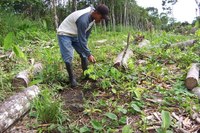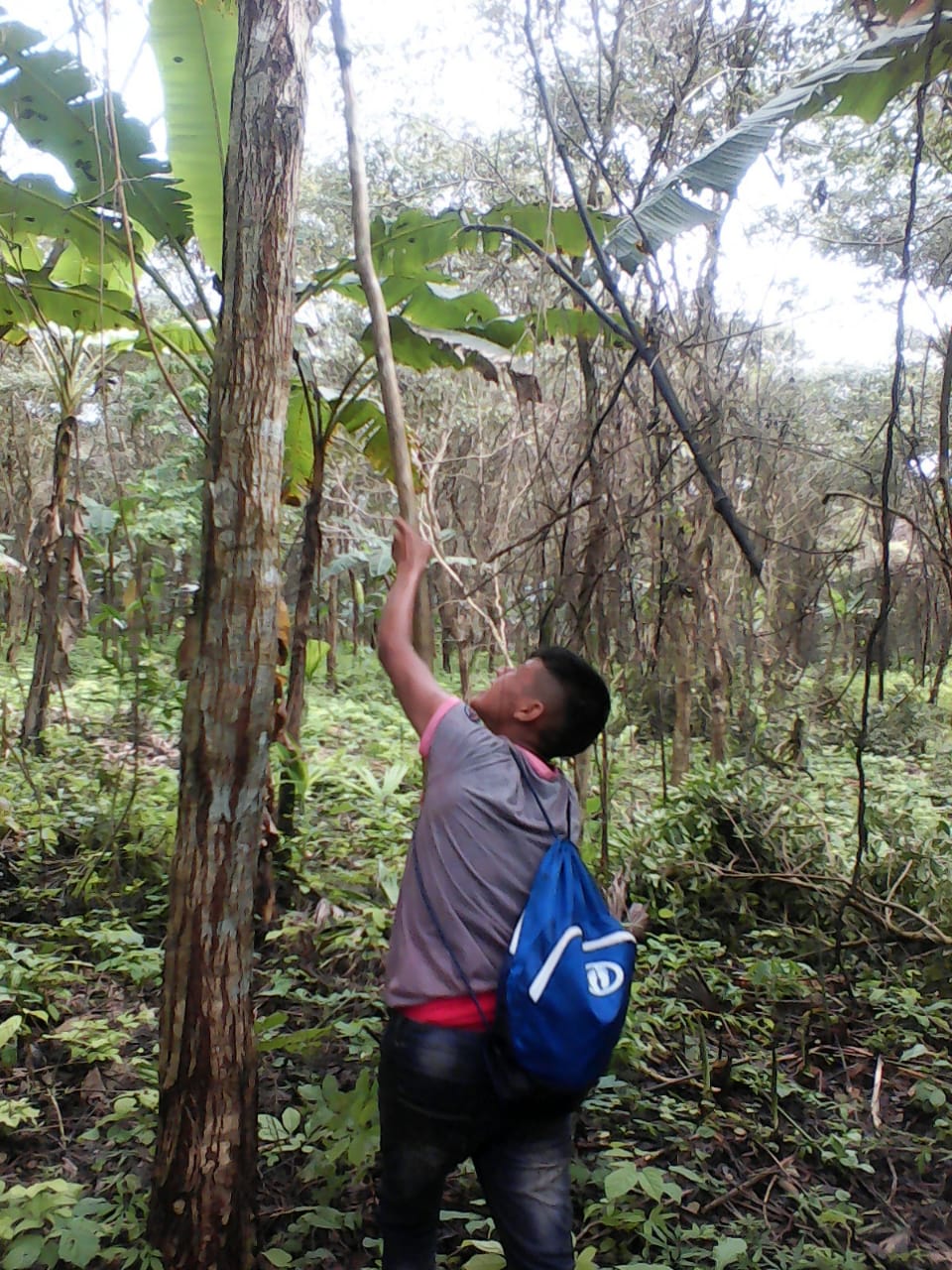Have your [cacao] and eat it, too
/ Planting Empowerment employee Liriano tends to a cacao sapling planted for the UNDP projectConventional thinking by most agronomists holds that creating a more biodiverse field or planting area ultimately reduces yields. However, a recent study entitled "Combining High Biodiversity With High Yields in Tropical Agroforests" suggests just the opposite: that increased yields and biodiversity can go hand-in-hand. The article, authored by Clough et al., examined biodiverse cacao (cocoa) plantations in Indonesia.
Planting Empowerment employee Liriano tends to a cacao sapling planted for the UNDP projectConventional thinking by most agronomists holds that creating a more biodiverse field or planting area ultimately reduces yields. However, a recent study entitled "Combining High Biodiversity With High Yields in Tropical Agroforests" suggests just the opposite: that increased yields and biodiversity can go hand-in-hand. The article, authored by Clough et al., examined biodiverse cacao (cocoa) plantations in Indonesia.
Last year through the UNDP's Small Grants Program we worked with Arimae to plant cacao in some of their older tree plantations. Arimae planted some of the cacao beneath the canopy of a 10-year old mahogany stand, and the rest in a new parcel of rosewood with more sun exposure. We will be closely monitoring the differences in growth and yield between the two parcels as they mature and begin to produce.
While we don't cultivate pure cacao in our investor-owned plantations, we do incorporate all of the sustainable management techniques mentioned in the research. This approach promotes a healthier biodiversity similar to the article, and is a key component of the Equitable Forestry model. Even an untrained eye can tell the difference between our plantations and a monoculture plantation.
As we continue to refine our investment offerings, we will be experimenting with interspering cash crops to produce earlier revenues for our investors.



